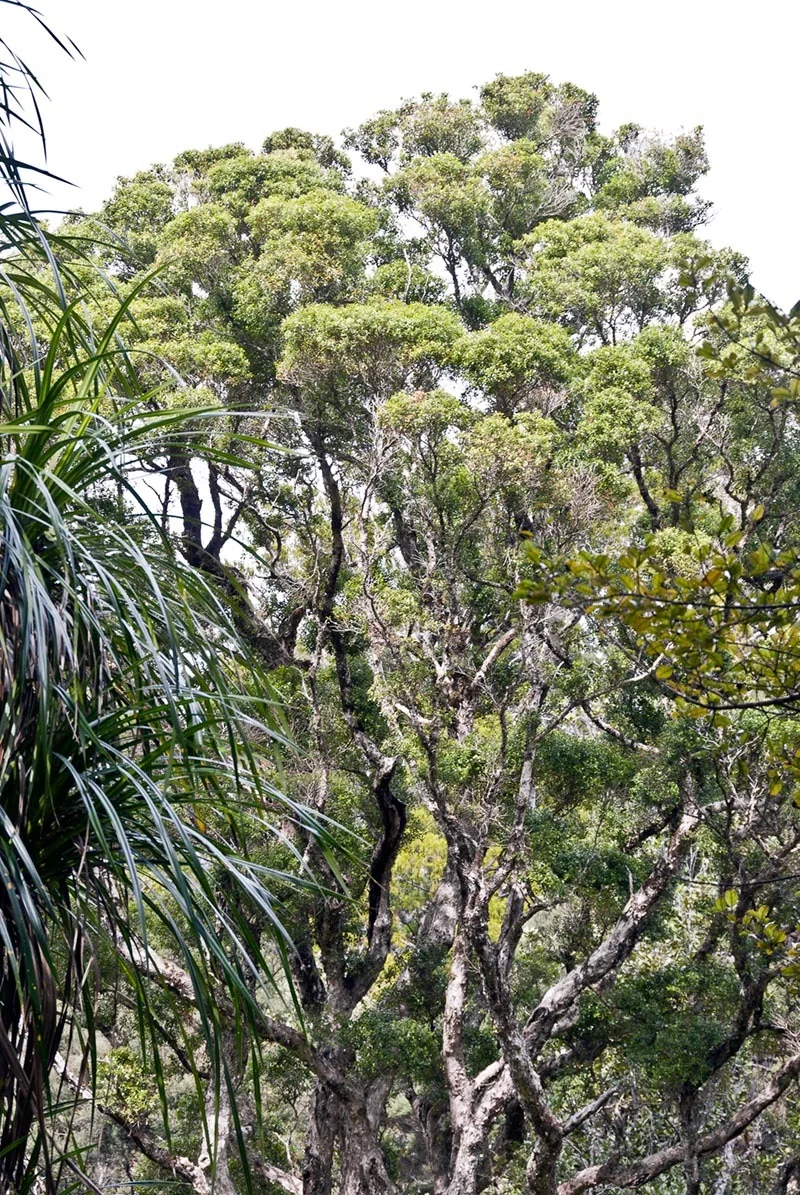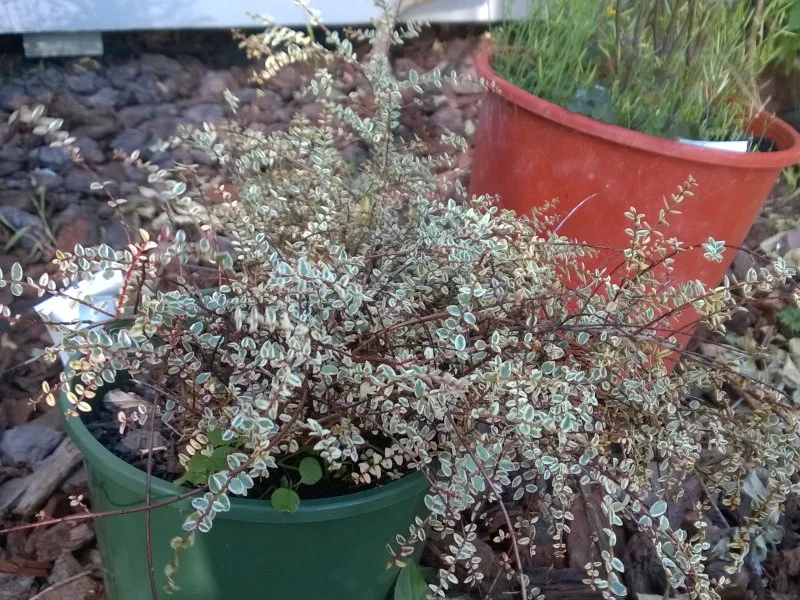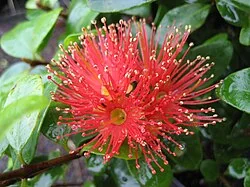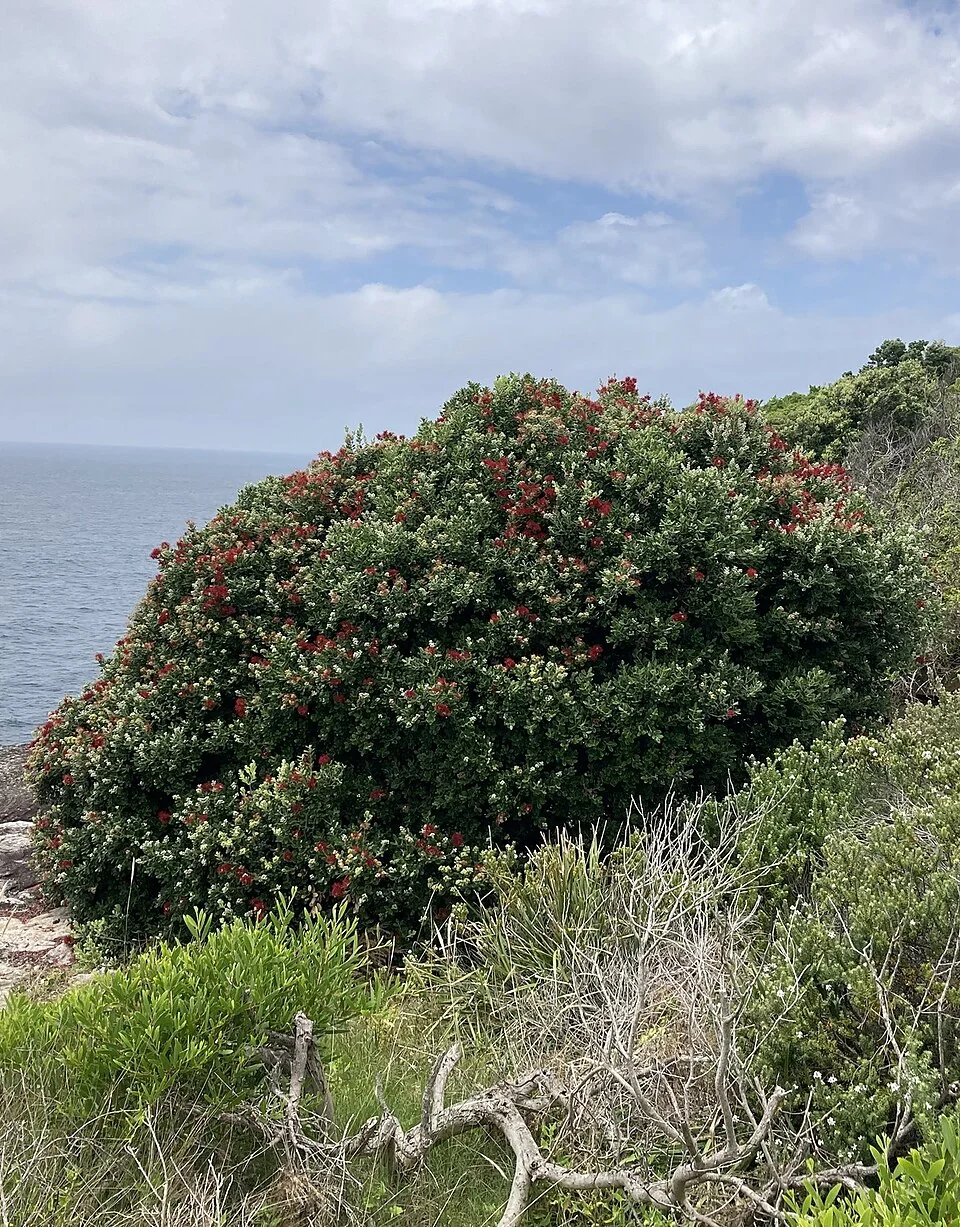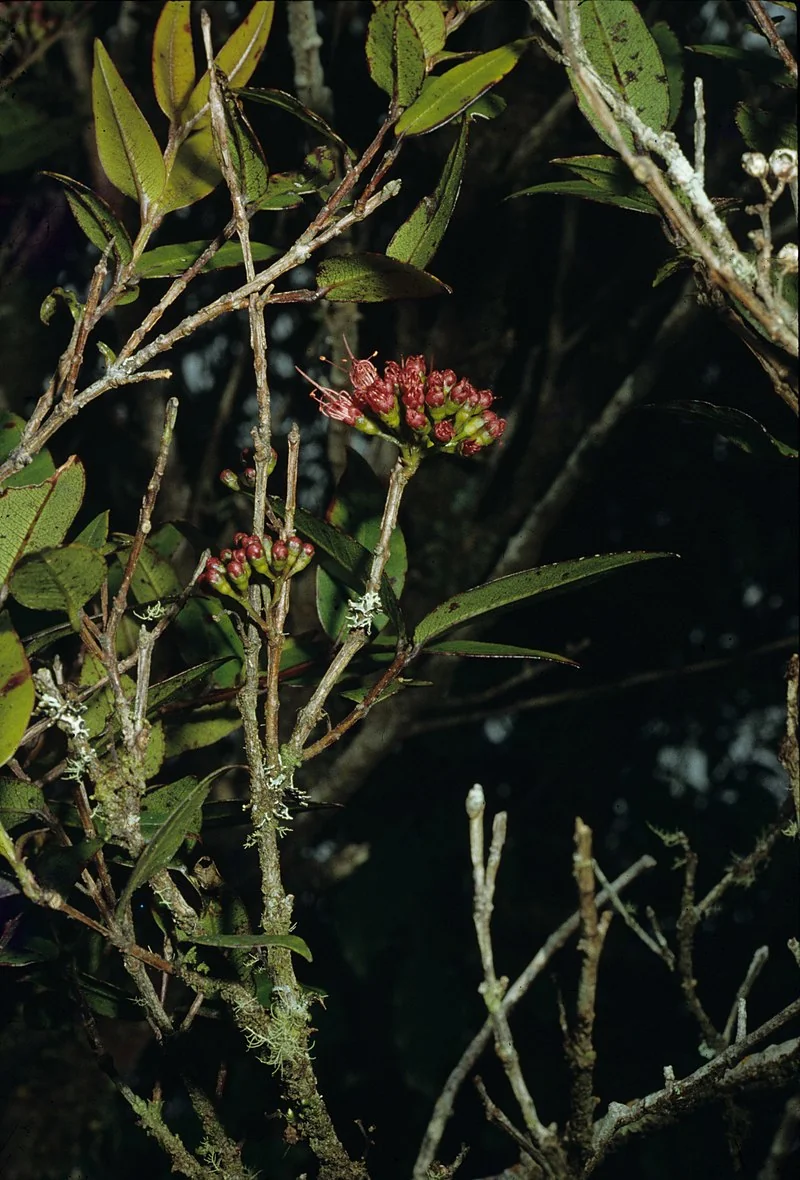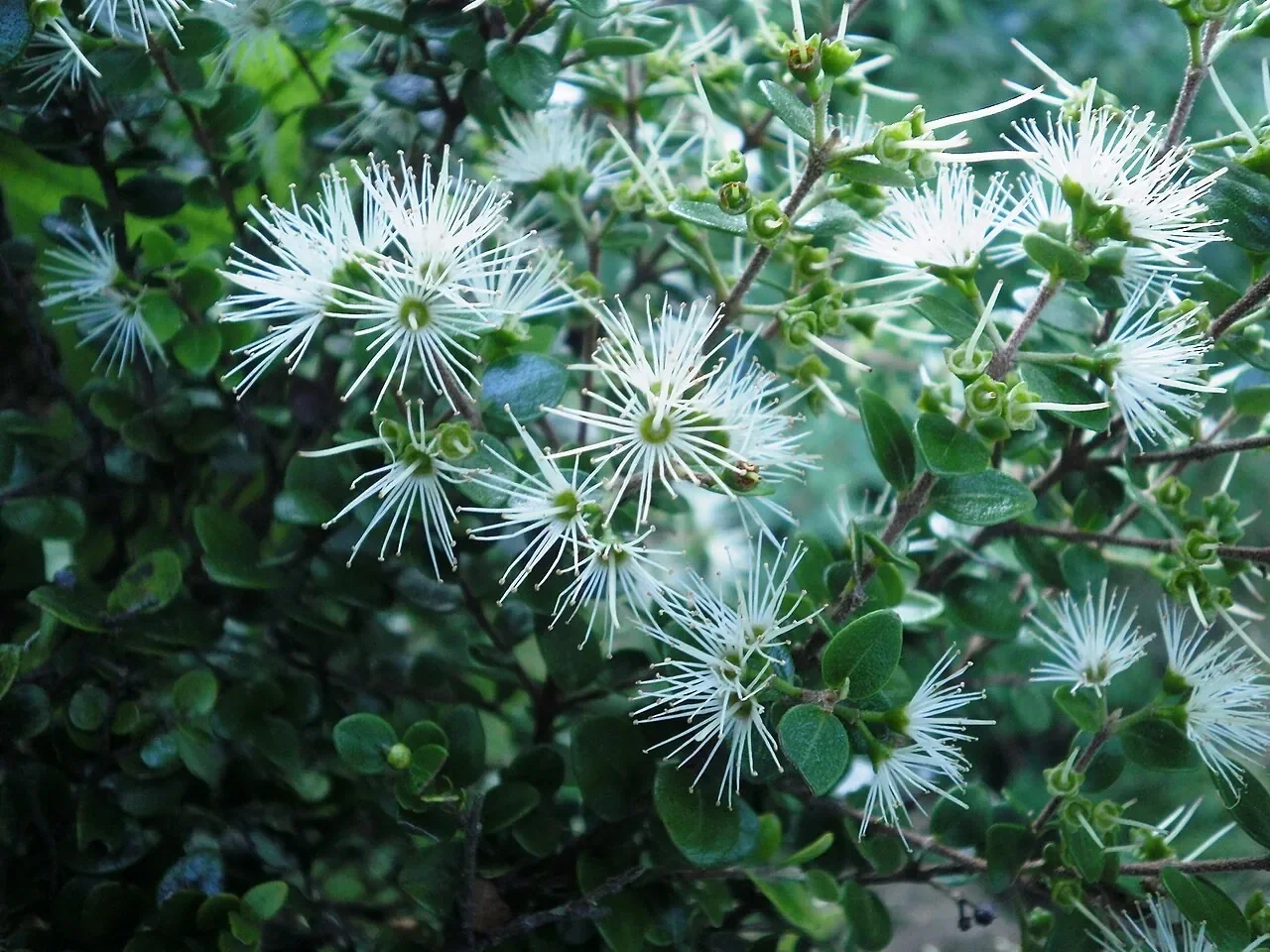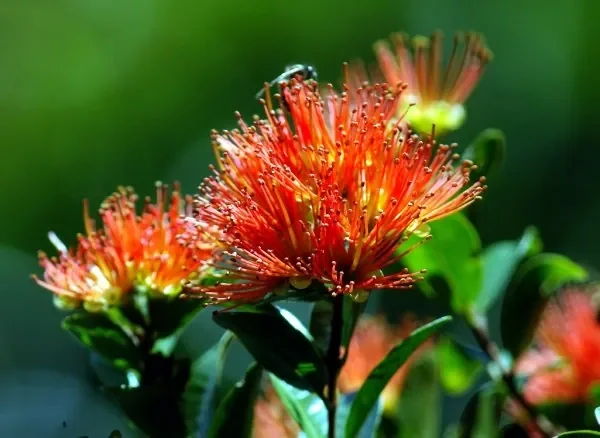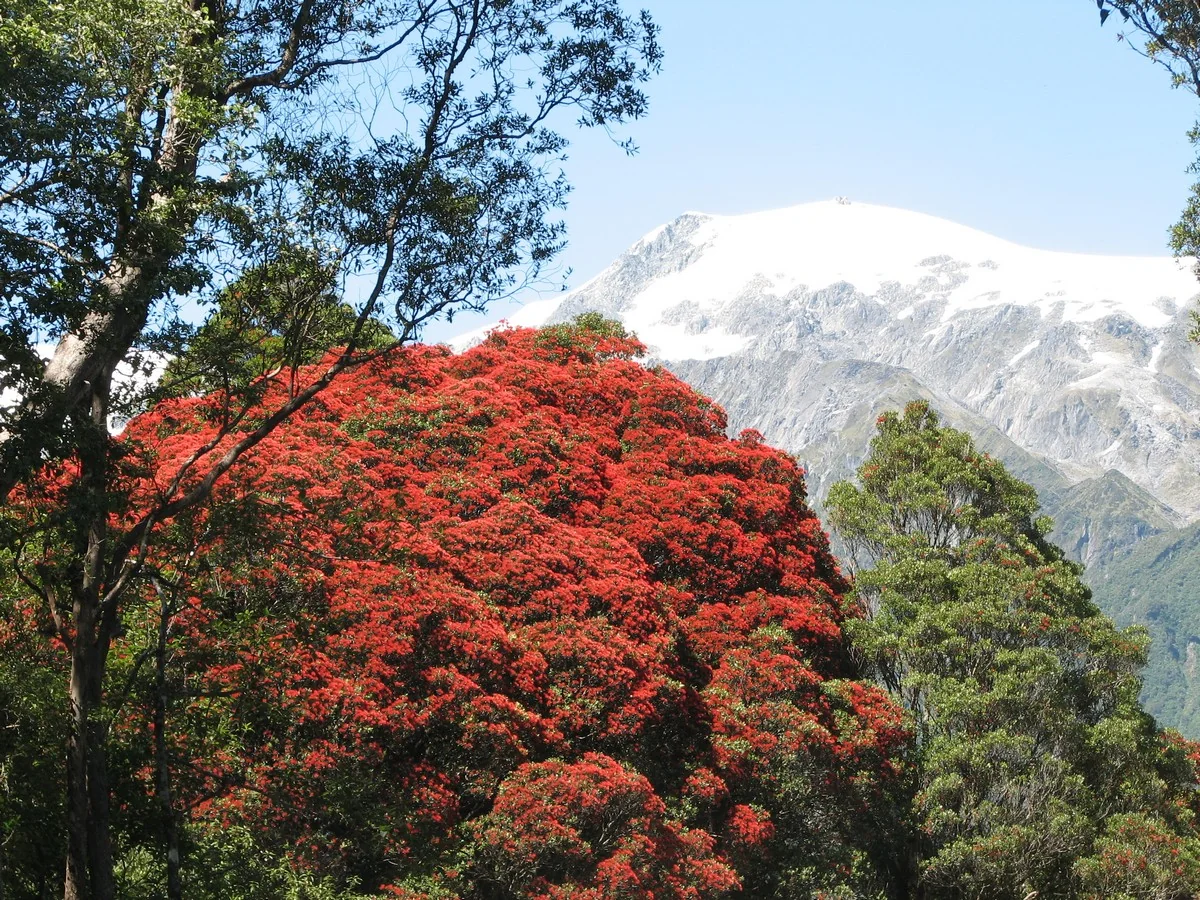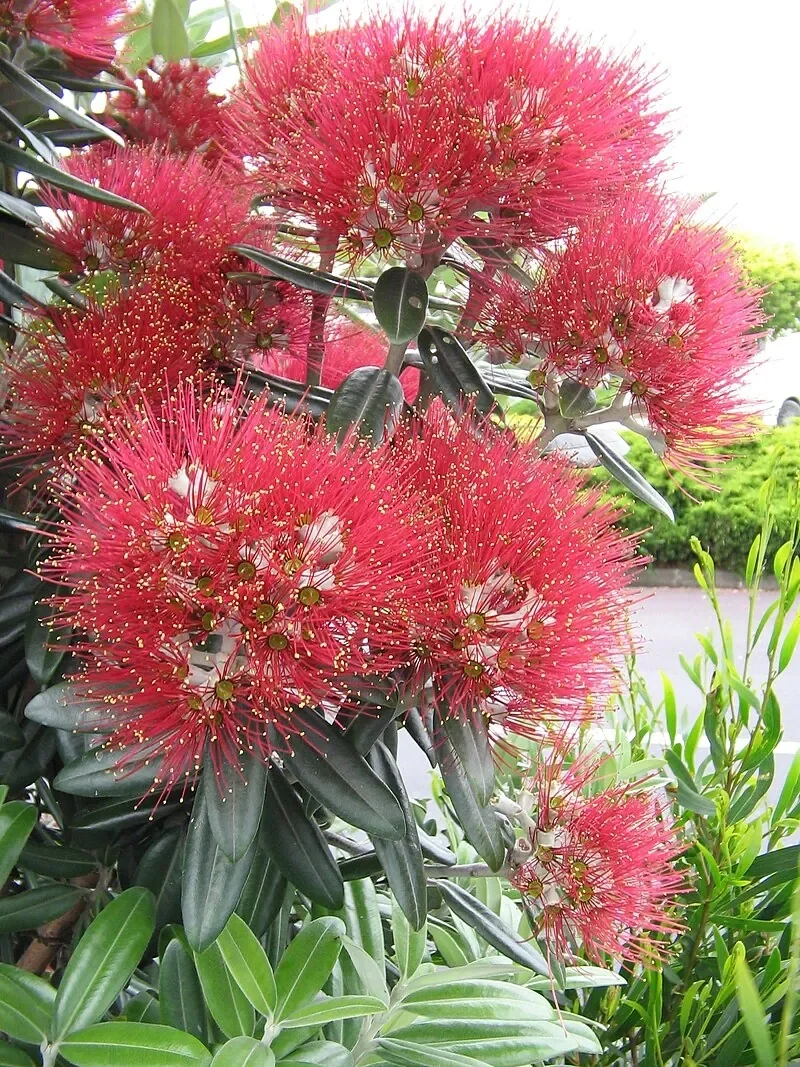
Pōhutukawa
Metrosideros excelsa
Introduction
Introduction Overview
Pōhutukawa ( Metrosideros ) is an iconic New Zealand coastal tree. Learn more about native trees .

Plant Description
Botanical Features
Pōhutukawa ( Metrosideros excelsa ) is a distinctive native plant with unique botanical characteristics that make it well-suited to New Zealand's diverse environments. This species exhibits typical features of its genus and family, with specialized adaptations that allow it to thrive in its natural habitat. The plant 's morphological features, including its leaf structure, growth habit, and reproductive characteristics, reflect millions of years of evolution in New Zealand's isolated environment. Understanding the botanical description of Pōhutukawa helps gardeners appreciate its unique characteristics and provides insight into its cultivation requirements and ecological role.
Quick Facts
Quick Facts Overview
| Scientific Name | Metrosideros Excelsa |
|---|---|
| Height | Up to 20 m |
| Spread | 10-15 m |
| Water Needs | Low (drought-tolerant once established) |
| Light | Full sun |
| Frost Tolerance | Low (sensitive to severe frost) |
| Salt Tolerance | High (excellent for coastal sites) |
| Growth Rate | Moderate to fast |
| Lifespan | Centuries |
Climate Best Suited to
Metrosideros is native to New Zealand and thrives in the country's diverse climate conditions. It adapts well to various regional climates throughout the country.
Regional Suitability
| City | Climate Suitability |
|---|---|
| Whangārei | Ideal |
| Auckland | Ideal |
| Hamilton | Ideal |
| Tauranga | Ideal |
| Rotorua | Ideal |
| Gisborne | Ideal |
| New Plymouth | Ideal |
| Napier | Ideal |
| Whanganui | Ideal |
| Palmerston North | Ideal |
| Wellington | Ideal |
| Nelson | Ideal |
| Christchurch | Ideal |
| Dunedin | Ideal |
| Invercargill | Ideal |
Natural Habitat
Natural Habitat Overview
Metrosideros is naturally found in specific habitats throughout New Zealand. Understanding its natural environment helps in providing appropriate growing conditions in cultivation.
Plant Conservation
Metrosideros excelsa , also known as Pōhutukawa or the New Zealand Christmas tree, has a conservation status of "Not Threatened" according to the New Zealand Threat Classification System (NZ TCS) as of 2023. However, it was previously classified as "Threatened - Nationally Vulnerable" in 2017 and 2018.
Despite its "Not Threatened" national status, the species faces regional threats. For example, in Auckland, its regional conservation status in 2025 is "At Risk - Regionally Declining."
Key factors affecting Metrosideros excelsa Include:
- Myrtle rust: It is susceptible to myrtle rust (Austropuccinia psidii), a disease that can impact its health.
- Possum browsing: In New Zealand, introduced common brushtail possums (Trichosurus vulpecula) pose a significant threat by stripping leaves, which can severely damage or even kill the trees.
- Habitat decline: The distribution of Metrosideros excelsa forest has declined by approximately 90% since human settlement in New Zealand, and its southern limit has retreated northward.
- Invasive species: While endemic to New Zealand, Metrosideros excelsa is considered an aggressive colonizer and an environmental weed in some areas outside its indigenous range, including parts of Australia, Europe, South Africa, and the USA, where it has naturalized.
Conservation efforts, such as those by Project Crimson, a non-profit organization, aim to protect and enhance Pōhutukawa forests.
Soil Requirements
Well-drained sandy soils.
Light Requirements
Full sun .
Water Requirements
Drought-tolerant once established.
Successful cultivation of Metrosideros depends on understanding and meeting its specific growing requirements. These requirements have evolved over thousands of years to suit New Zealand's unique environmental conditions.
By replicating these natural conditions in your garden, you can create an environment where the plant will thrive and contribute to a healthy, sustainable ecosystem that supports local wildlife and biodiversity.
Planting Guide
How to Plant
- Choose a sunny, coastal site.
- Plant in well-drained soil.
- Water until established.
This section provides important information about Metrosideros and its role in New Zealand's native ecosystems. Understanding these aspects helps gardeners and conservationists make informed decisions about plant care and landscape design.
By incorporating this knowledge into gardening and restoration practices, we can better support the health and diversity of New Zealand's unique native plant communities.
Ecological Role
Wildlife Interactions
Metrosideros excelsa (Pōhutukawa) is a keystone species in coastal ecosystems, providing nectar for birds, bees, and insects during its spectacular summer flowering. The dense canopy offers shelter and nesting sites for native fauna, while the extensive root system stabilizes sandy soils and prevents coastal erosion. Like other important coastal native trees , Pōhutukawa's resilience to salt spray and wind makes it vital for maintaining the health and biodiversity of New Zealand's coastal environments.
Uses and Significance
Garden Uses
- Coastal shelter
Large native trees provide excellent shade, wind protection, and habitat for birds. Their timber and leaves have traditional uses.
Landscaping Uses
Landscaping Uses Overview
Metrosideros excelsa (Pōhutukawa) is an iconic choice for coastal and large gardens, valued for its dramatic red summer flowers and broad, spreading canopy. It serves as a striking specimen tree, provides excellent shade, and acts as a natural windbreak in exposed sites. Pōhutukawa is ideal for seaside plantings, public spaces, and restoration projects, where its tolerance for salt spray and wind is essential. Its roots help stabilize sandy soils, and the dense foliage offers habitat for native birds and insects. Plant as a focal point in lawns, along driveways, or in mixed native borders for year-round interest and ecological benefit.
Seasonal Care
Spring
- New growth begins
Summer
- Flowers bloom
Autumn
- Seed pods develop
Winter
- Minimal growth
Each season brings different care requirements for Metrosideros. Understanding these seasonal needs helps ensure the plant thrives throughout the year and maintains its health and appearance.
Adapting care practices to seasonal changes also helps the plant develop natural resilience and reduces the need for intensive maintenance. This approach supports sustainable gardening practices.
Pruning
How and When to Prune
Prune to shape after flowering.
Regular pruning of Metrosideros helps maintain its health and desired shape. Remove any dead, diseased, or crossing branches to improve air circulation and reduce the risk of pest and disease problems.
For most native plants, light pruning throughout the growing season is better than heavy pruning at once. This approach encourages healthy new growth while maintaining the plant's natural form and character.
How to Grow Pōhutukawa
Growing Pōhutukawa successfully requires understanding its coastal origins and specific environmental preferences. This iconic New Zealand Christmas tree, with its spectacular crimson summer blooms, thrives in warm climates with excellent drainage and salt tolerance. As a coastal species mainly found in the North Island's warmer regions, Pōhutukawa presents both rewards and challenges for cultivation. The tree's drought tolerance once established, combined with its intolerance of waterlogged conditions, means proper site selection and drainage are crucial for success. Understanding its propagation requirements, from fresh seed collection to advanced grafting techniques, enables gardeners to successfully establish this culturally significant native tree.
From Seed
Seed propagation offers the most reliable method for growing Pōhutukawa, though timing is critical as seed viability drops rapidly. Fresh seed collection during the optimal window provides excellent germination rates, while understanding proper sowing techniques ensures successful establishment of this magnificent coastal tree. Collect seeds between March and April when most capsules on lower branches are open or partially open. Harvest seeds immediately when fresh, as viability drops significantly even after a few weeks of storage. Process seeds quickly to prevent drying out, which severely impacts germination success rates. Prepare seed trays or pots with free-draining seed compost, ensuring excellent aeration and drainage. Sow seeds very thinly on the surface of the growing medium without covering, as light aids germination. Plant seeds approximately 6-12mm deep in well-draining potting mix, spacing them adequately apart. Keep soil consistently moist but avoid waterlogging, as seeds are sensitive to excessive moisture. Place containers in a warm, well-lit location such as a greenhouse or sunny windowsill. Maintain temperatures between 18-22°C for optimal germination conditions. Be patient as germination can be slow and irregular, taking several weeks to several months. Transplant seedlings carefully when they have developed sufficient size and root systems.
From Cuttings
Cutting propagation of Pōhutukawa presents significant challenges and requires advanced skills and patience. While possible, the extremely low success rates and extended timeframes make this method suitable only for experienced propagators with specialized equipment and persistence. Select soft wood water shoots, which provide the best chance of success among cutting types. Take semi-ripe cuttings during summer when growth hormones are most active. Choose healthy, disease-free shoots from vigorous parts of mature trees. Make clean cuts 8-12cm long using sharp, sterilized cutting tools. Remove lower leaves while retaining 4-6 leaves at the cutting tip. Apply high-concentration rooting hormone (8000-10000ppm IBA) designed for difficult woody species. Plant in sterile, very free-draining propagation medium with excellent aeration. Provide bottom heat at 22-25°C combined with high humidity levels. Utilize professional mist propagation systems for best environmental control. Accept that success rates are very low even under optimal conditions. Be prepared for rooting to take 9 months or more when successful. Consider alternative propagation methods for most gardening situations.
From Grafting
Grafting provides an alternative propagation method for maintaining specific cultivars or when other methods prove unsuccessful. This technique requires specialized skills but can be effective for producing plants with desired characteristics. Grow seedling rootstocks from fresh seed to provide vigorous, healthy base plants. Select scion material from mature trees with desired characteristics. Use side grafting techniques during the active growing season. Ensure compatibility between rootstock and scion for successful union. Maintain optimal environmental conditions during the grafting period. Monitor graft unions closely for signs of successful establishment. Provide appropriate aftercare until grafted plants are fully established.
Pests and Diseases
Common Pests
Metrosideros is generally resistant to most pests due to its native adaptations. However, it may occasionally be affected by common garden pests such as aphids or scale insects.
Disease Prevention
To prevent diseases, ensure good air circulation around Metrosideros and avoid overwatering. Remove any diseased plant material promptly to prevent spread.
Cultural Significance
The Metrosideros excelsa , commonly known as the Pōhutukawa tree, holds significant cultural importance in New Zealand, deeply intertwined with both Māori tradition and broader national identity.
Key Aspects of Cultural Significance:
- New Zealand Christmas Tree: The Pōhutukawa is widely recognized as the "New Zealand Christmas tree" because its vibrant crimson flowers bloom during the Southern Hemisphere's summer, coinciding with the Christmas season. This makes it a cherished symbol of Christmas for New Zealanders, often featured on greeting cards, in poems, and songs. Early European settlers also adopted it for Christmas decorations, referring to it as "Settlers Christmas tree" and "Antipodean holly."
-
Māori Mythology and Spirituality:
- Tāwhaki Legend: In Māori tradition, the tree's striking red flowers are said to represent the blood of the warrior Tāwhaki, who, according to legend, fell to earth while attempting to reach the heavens to avenge his father's death.
- Cape Reinga (Te Rerenga Wairua): A particularly ancient and gnarled Pōhutukawa tree at Cape Reinga, the northernmost point of New Zealand, holds profound spiritual significance. For Māori, this site is known as "the place of leaping," where the spirits of the deceased embark on their journey back to their ancestral homeland of Hawaiki, descending into the underworld via the tree's roots.
- Symbolism: The Pōhutukawa symbolizes bravery, strength, and resilience, and represents the connection between the earthly and spiritual realms. It is also regarded as a "chiefly tree" (rākau rangatira) by Māori. Its blooming during the festive season also intertwines themes of life, death, and continuity.
- Remembrance: The tree is often associated with mourning and remembrance, making it a fitting tribute for commemorative events. Many surviving Pōhutukawa trees are considered sacred (tapu).
- National Identity: Beyond its spiritual and festive roles, the P� hutukawa has become an important national symbol for New Zealanders, contributing to a strong sense of identity both at home and abroad.
- Historical Uses: Historically, Māori utilized the Pōhutukawa's durable wood for crafting tools, weapons, and boats, and its leaves and bark were used for medicinal purposes.
Bonus Tip
The New Zealand Christmas Tree
The Pōhutukawa is famously known as the "New Zealand Christmas tree" because of its spectacular display of vibrant red flowers that typically bloom in December, coinciding with the Southern Hemisphere's summer and the Christmas season. These brilliant blossoms transform the coastal landscape, making it a cherished symbol of the New Zealand summer holidays.
